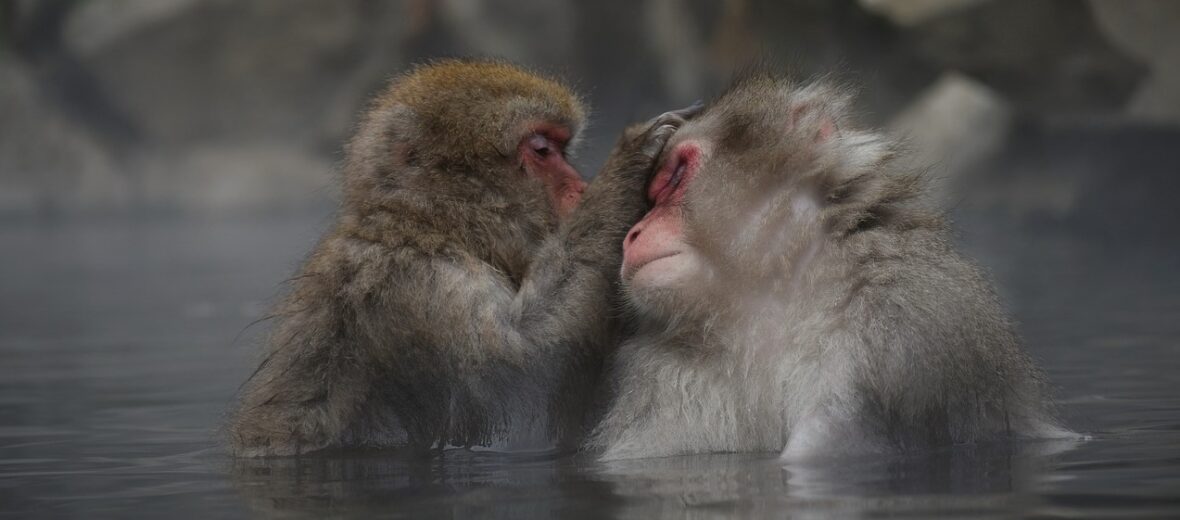
The Japanese macaque monkey, aka snowy monkey, is found on 3 of the 4 main Japanese islands: Honshu, Shikoku, and Kyushu. Their preferred habitat is evergreen and broad-leaved deciduous forests, from subtropical lowlands to sub-alpine regions. They can be found at up to 9,600 foot elevations where the temperatures drop to nearly -5°F! These monkeys are listed as Least Concern by the IUCN.
First the Stats…
Scientific name: Macaca fuscata
Weight: Up to 25 lbs.
Length: Up to 1.9 feet
Lifespan: Up to 27 years
Now on to the Facts!
1.) Snowy monkeys in Jigokundani Monkey Park, in Nagano, Japan often come down from their high elevations to sit in the local hot springs. This is quite the crowd favorite.
2.) In a process known as cultural transmission, these monkeys have learned to seek out the warmth of the thermal pools by watching possibly humans sitting in the warm water. It is also surmised that 1 monkey happened upon the springs and others soon followed.
3.) They are omnivores (eat both plant and animal matter) that aren’t picky eaters at all. They will chow down on everything from insects, ferns, fruit, roots, tree bark, fungi, invertebrates, bird eggs, to fish, and they’ll even eat dirt!
4.) Sans humans, they are the only known primate to actually wash their food before they eat it. Sans the previously mentioned dirt.
5.) Japanese macaque monkeys are born into their social class. This class dictates their privilege to eat. Kind of a caste system but for monkeys.
But wait, there’s more on the Japanese macaque monkey!
6.) These macaques form matrilineal troops that have as many as 100 individuals, but typically have between 20 – 30. The troop is ruled by an alpha male and female.
7.) Snowy monkeys are seldomly aggressive. They form strong bonds via social grooming and have a well established hierarchy.
Did you know…?
Japanese macaques are such good swimmers that they have been documented swimming up to 1/3 of a mile!
8.) These monkeys inherit dominance from their moms. Daughters tend to outrank any monkey who is subordinate to her mom. The youngest even outranks all of her older sisters.
9.) As these monkeys have become used to human interactions, like being fed, they have begun to take on behavioral traits. Some traits include banging rocks together and engaging their human spectators in a friendly manner.
10.) 1 monkey even taught the others in his troop to wash their food. Years after this teacher’s death, the other monkeys still wash their food before eating it. This suggests the ability to develop cultures.
Now a Short Japanese Macaque Monkey Video!
Also, check out the Critter Science YouTube channel. Videos added frequently!
Want to suggest a critter for me to write about? Let me know here.



